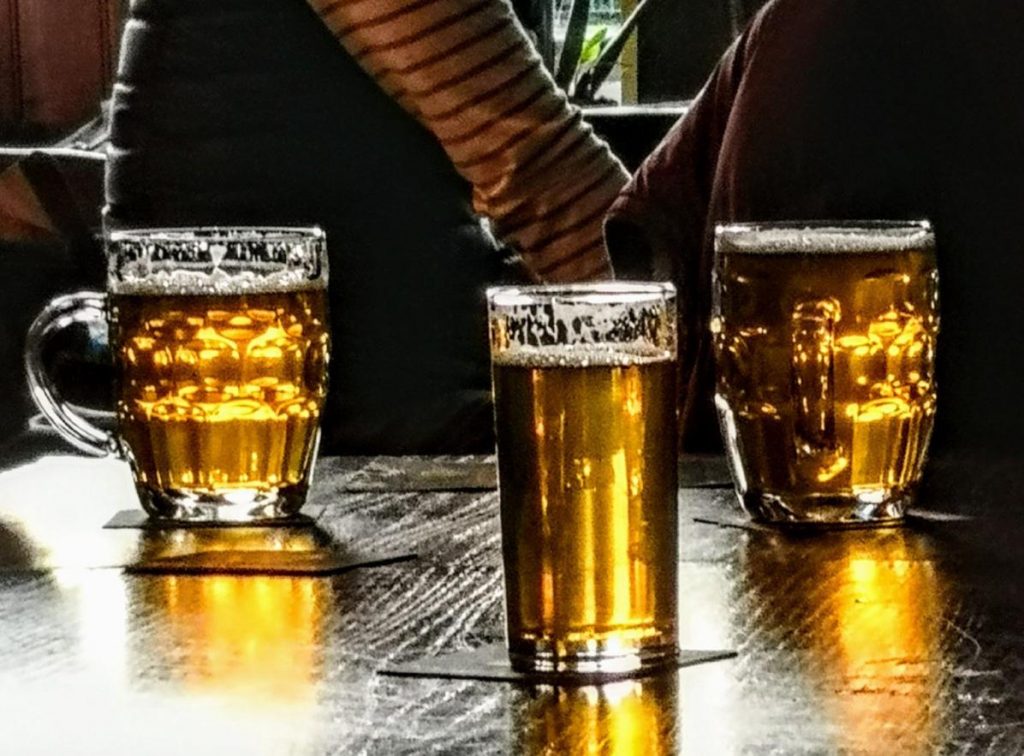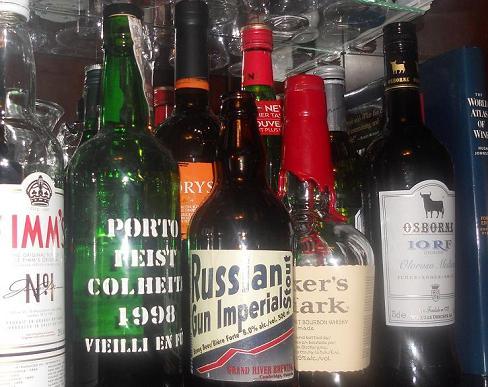
I’d be a bit nervous at the Sing Sing Kill Brewery
Ah, Halloween. A right nor-easter is promised meaning 100 mph winds, lashing rain – and me lonely and all dressed up at the front door looking at a bowl with a minimum of 15,000 calories per handful. We get maybe 12 kids max in a good year. Maybe. I have a vegetable garden on my front lawn. I am marked as a neighbourhood weirdo. But I get ahead of myself. Halloween is tonight. The Future. What’s gone on this past week?
Last Friday just as the weekly news cycle began, Jeff posted about the problem with novelty as it turns into longevity:
Every brewery that was once an emblem of a shining new future—Widmer, Hair of the Dog, Ninkasi, Boneyard (to cite local examples)—has seen trends move on without them. Great Notion and Ruse are the current trendsetters, but time continues to march. We have absolutely no experience of what happens when four thousand breweries immediately become “old school” before our eyes.
Coming up on three years ago now, I wondered about novelty and whether it was possible that today’s twenty somethings could “actually get a bit verklempt over memories of weird fruit flavoured gose thirty years from now.” Interesting that weird fruit flavoured gose is sorta dead to us all now. It’s so 2017. Novelty’s pace has increased. The Pub Curmudgeon posted about another aspect of the same phenomenon, the pervasive presence of recently but no longer quite cool craft:
It’s not the absolute bleeding edge of craft, but even so it’s a pretty respectable selection, including the likes of Vocation, Magic Rock, Thornbridge, Five Points, Crate, Toast and Camden. It’s interesting that pretty much all of these beers now seem to have moved from bottles to cans. The German discounters, Aldi and Lidl, have introduced their own-brand “craft-a-likes” at even lower prices. This has attracted a certain amount of wailing and gnashing of teeth from the craft influencers, complaining that such low prices will devalue the concept and won’t give brewers a decent return.
Good value should always be something we are grateful for. In any other marketplace, this is called The Victory Of The Consumer! What? You disagree? Did I miss something?
Note: he didn’t drop the beer.
Ron unpacked an advert he found for the sale of Barclay’s Russian Stout from that part of the foreign land known as the past, aka 1922:
…another Barclay’s Russian Stout advert. With some more interesting claims. The oddest being that Bismarck liked Russian Stout. Especially as the advert is from just after WW I, when there was still considerable anti- German feeling.
These things are funny. In 1816, a year after the end of a bitter border war with the US of A, Albany Ale was being sold in my fair military town.
Business Insider posted an interesting short video bio of Celeste Beatty, the first African American woman to own a brewery in the US, the Harlem Brewing Company in New York City. Here is a Forbes story on her from a few years ago with more background. Speaking of vids, here is a scene from a Scottish pub the very noo.
The shadowy Portman Group is at it again but this time I fully agree if only because the Bearded Brewery defended its cider named Suicyder because “the noose references reflected the owner’s previous career at the Forestry commission where a noose was used to dismantle unsafe trees“! If one is going to attorn to the jurisdiction of a trade tribunal please do not be silly. I am an owner of The Ashley Book of Knots and I know no one in their right mind would every use a noose to take apart a tree given a noose is used to tighten on to a short stubby think like a head. To be clear, I give you a selection of arborists knots. Knots don’t lie.
Health news update. Or really not an update as this is old news. Again, there is no j-curve. Don’t believe otherwise – alcohol is just about degrees of badness:
…for a long time, the consensus was that abstaining from alcohol is unhealthier than consuming moderate amounts of alcohol (equivalent to one or two drinks a day). But that “J”-shaped relationship between alcohol consumption, and death and disease, has come under criticism. It’s now widely understood that a lot of this data could be flawed: people abstaining from alcohol may be doing so because they’re unwell, rather than becoming unwell because they’re abstaining.
Here in Ontario, we have no need to worry about the j-curve or not as, woohoo, the new government is passing new relaxed liquor laws left right and center:
The Ford government is pledging more changes to alcohol access in Ontario — announcing plans on Monday to allow international airports to serve booze 24-hours a day, and to remove limits on how much beer, wine and spirits can be brought across provincial or territorial borders for personal use. Those two promises are among a sweeping list of changes, packaged as the ‘Better for People, Smarter for Business Act’… The Bill also promises to ease restrictions on bringing dogs onto restaurant patios, and inside certain breweries in the province.
Those booze runs I made into nearby Quebec all those years ago? Smuggling. NO MORE!!! What a great law. Huh? Holy crap! “The Bees Act is repealed“!!!
I enjoyed the personal essay, photo set and brewery founder interview by Lily Waite run in Pellicle this week on the Table Beer produced by London brewery, The Kernel:
“The other thing—and I think it helps Table Beer more so than the others—is the fact that we still put all of our beers through a second fermentation,” Evin tells me over a shared bottle. “The extra little bit of yeast character and fermentation by-products that you get—hop biotransformations, too—those really hard-to-define things, they’re key to Table Beer.” Though I’ve drunk many brown-papered beers in search of that fugitive quality, I’m reluctant to believe it’s simply down to a second fermentation. I’m much more inclined to believe that it is, in fact, a little bit of magic.
It’s good not always to dissect something but convey the pleasure of it all. I think the author has done that. These pieces, like Matt C’s before, are love letters. But there are technical tidbits, too: (i) “…as with all of their beers, the strength varies from batch to differently-hopped batch…“; (ii) “…[i]t’s now brewed weekly, every Friday…“; (iii) “…a fullness of body, achieved through high mash temperatures and oats in the grist…” All of which add up to a story that is telling you that the beer is borne more by the technique than the ingredients. Very interesting.
The proud Canadian company formerly known as Molson is still theoretically out there, now going through another hybridization and perhaps some degree of bionic implantation:
Most support functions, including finance, information technology, procurement, supply chain, legal and human resources, will be consolidated in Milwaukee. The company will continue to maintain global business services offices there and in Bucharest, Romania. The Molson Coors International team, meanwhile, will be reconstituted, with its Latin American team becoming part of a new North American Emerging Growth team headed by Pete Marino. Its Asia, Pacific and Africa team will fold under the Europe business unit, which will be led by Simon Cox.
Interesting to note that they are branching out into other areas including a “forthcoming line of cannabis-infused nonalcoholic beverages in Canada.” Sounds hellish to me but the baby boomers love this sort of stuff apparently.
That is it for now. Get going on the tricking and the treating. For further beery links, check out the Boak and Bailey news update on Saturday and then bend an ear towards the OCBG Podcast on Tuesdays. The last one featured a great interview with Ren Navarro, owner of the consulting and education firm Beer. Diversity. And look for mid-week notes from The Fizz as well.








 It’s been a tough old day. I was in a suit and tie until 11:30 pm yesterday. Nothing could be worse. Then, Paul and I are all pointy fingers
It’s been a tough old day. I was in a suit and tie until 11:30 pm yesterday. Nothing could be worse. Then, Paul and I are all pointy fingers 